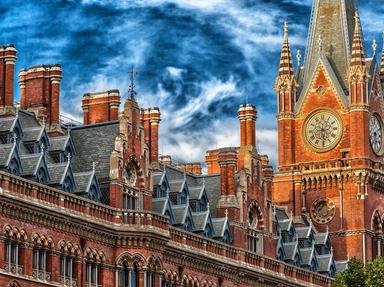Quiz Answer Key and Fun Facts
1. Perhaps one of the best known sights in London is the clock tower of the Houses of Parliament, Westminster. What is the affectionate name, which was originally given to the big bell within, of this national landmark?
2. Britons love their sport and have created many of the games that are now played and enjoyed throughout the world. But which of these sports did not originate in UK?
3. A place of interest to many visitors to the UK is the Imperial War Museum at Lambeth Road, London.
Here you can see the history of conflicts involving Britain and the Commonwealth from the First World War through to the most recent events.
Much of the museum is dedicated to World War II which was a particularly tough yet heroic time for the British Isles.
During the War Britain needed a resolute political leader to plan strategy, maintain moral and inspire the people.
Name this British war-time Prime Minister, famous for his "V" for victory salute and smoking fat cigars.
4. Myths and legends abound in the UK, many tales with their origins deep in the mist of time.
According to one legend a Lady rode naked through the streets of the English city of Coventry.
What was that Lady's name?
5. The UK has many well established institutions - some are loved and others are just tolerated.
Which of these institutions is affectionately known as "Aunty (Auntie)" by the British public?
6. Although most Britons now holiday abroad, British sea-side resorts are still popular for short breaks and days out.
They have many landmarks and attractions, piers, funfairs and historic buildings.
Which of these UK resorts has a scaled down version of the Eiffel Tower?
7. According to legend Robin Hood roamed a wooded area of the UK stealing from the rich and giving to the poor.
In which of these forests did Robin Hood and his Merry Men perform their philanthropic deeds?
8. Each part of the UK maintains its own identity, each has their own flag, emblems and patron saint.
Which of these is the patron saint of Wales?
9. The UK has a rich heritage and many historical events are commemorated with monuments which are to be found scattered throughout the British Isles.
Which of these monuments is located in London's Trafalgar Square?
10. Whilst traveling around the rural areas of the UK you will see many quaint buildings with thatched roofs.
Which of these is the most common material in the construction of a thatched roof?
Source: Author
musicmonkeyman
This quiz was reviewed by FunTrivia editor
ozzz2002 before going online.
Any errors found in FunTrivia content are routinely corrected through our feedback system.

